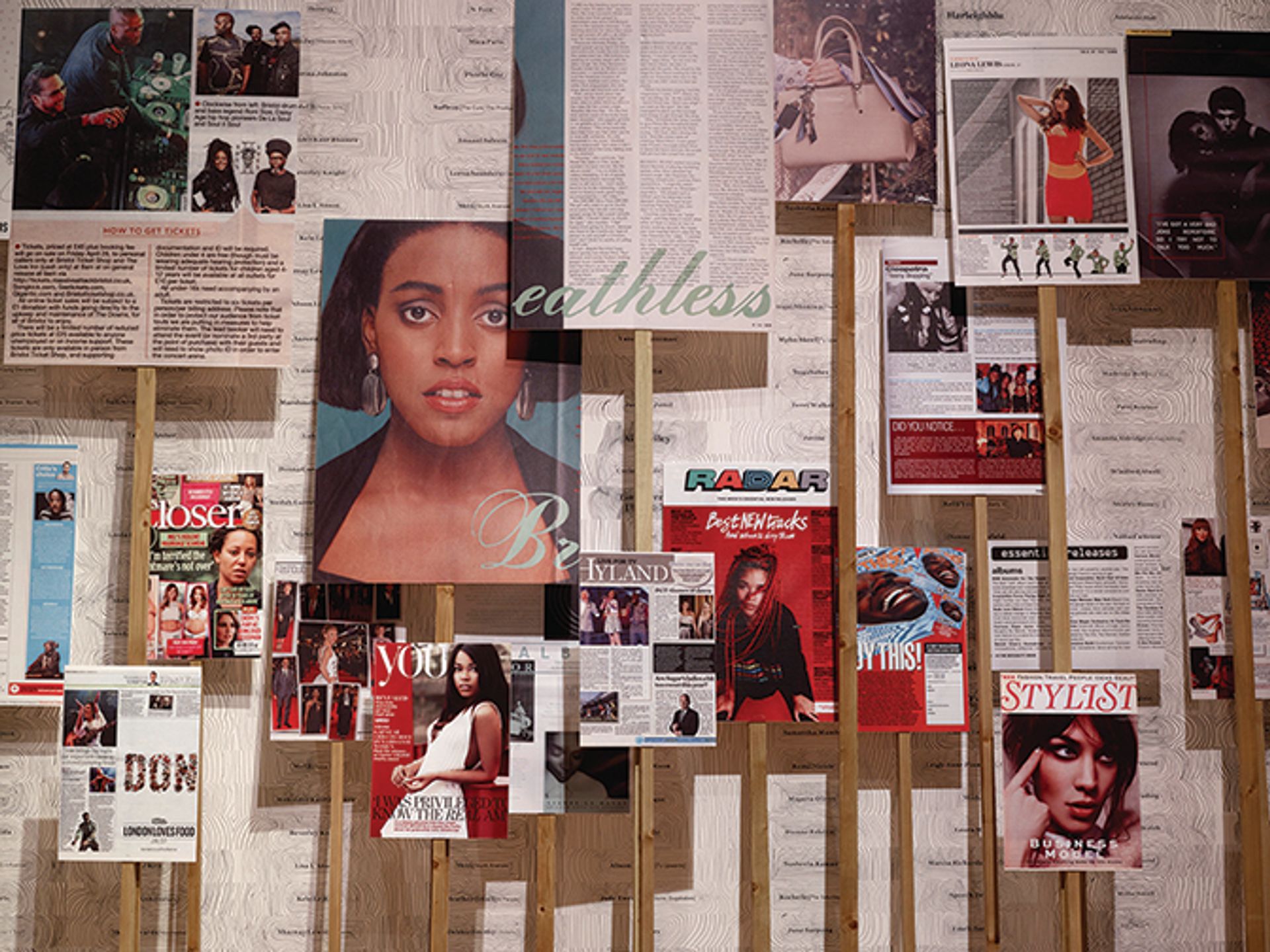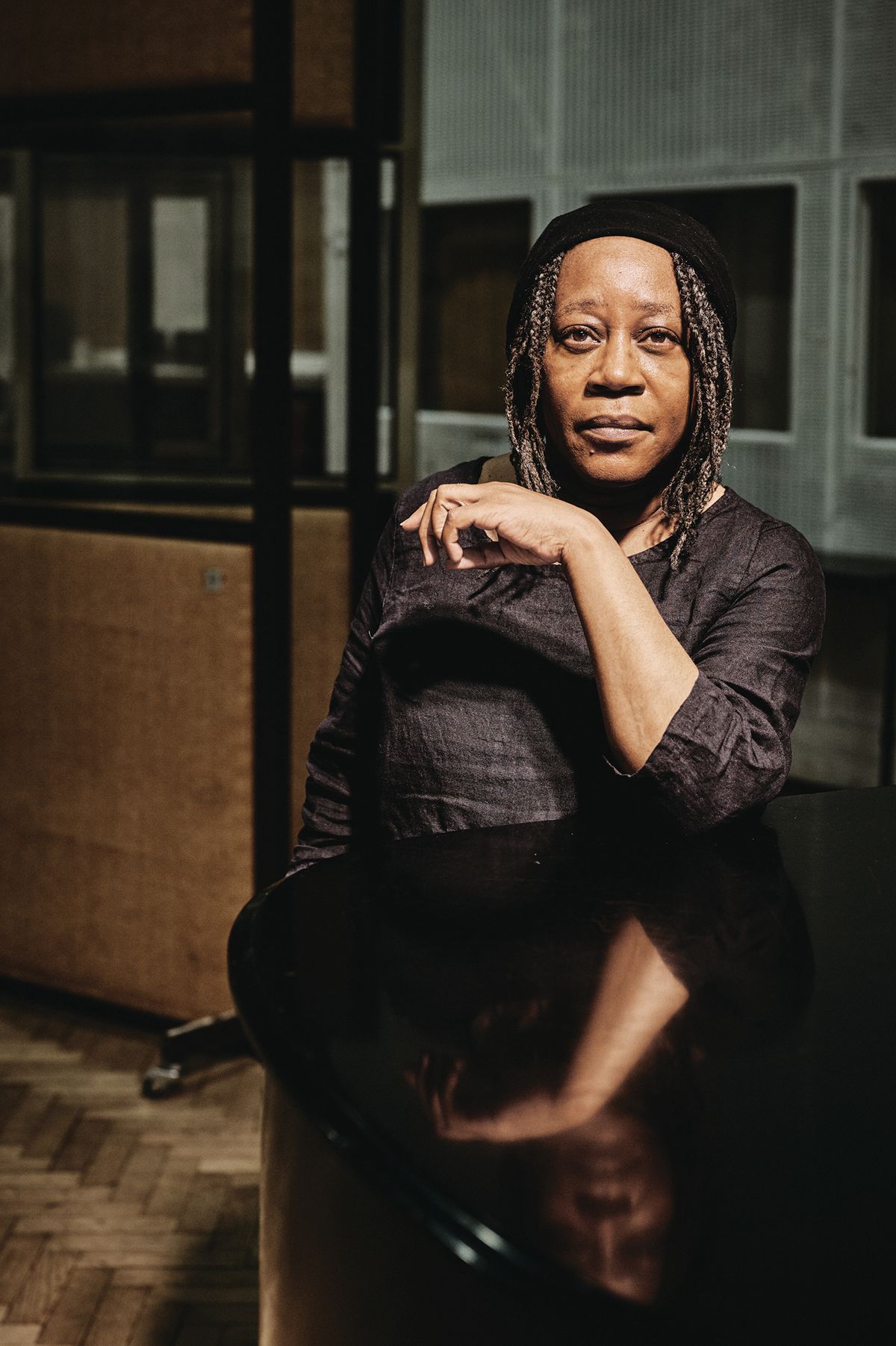Sonia Boyce (born in London, 1962) came to prominence in the early 1980s as a key figure in the burgeoning Black Arts Movement with pastel drawings and photo collages that addressed issues of race and gender. Since the 1990s she has made multimedia, improvisational work, bringing people together in a social, performative practice that incorporates film, photography, print, installation and sound. In 2016 she was the first Black woman to be elected a Royal Academician and now she’s broken another barrier as the first Black woman artist invited to occupy the British pavilion in Venice, commissioned by the British Council.
How does it feel to be chosen to represent Britain? And to be the first Black woman artist occupying the pavilion?
It’s shocking in 2022 to be the first in that instance. I shouldn’t be the first and it shouldn’t seem like a massive step. It’s just extraordinary that it’s taken this long and there are many artists who should have been considered along the way. The thing that undercuts the accolade of being the first is a sense that somehow I’m out of place. So while I understand the accolade, I also understand that actually what’s being said underneath is “oh, we weren’t expecting you”.
So do you see yourself as representing Britain in this context?
The idea of national pavilions feels very odd. But when one’s at Venice during the Biennale going from pavilion to pavilion one’s really taking the temperature of what’s happening in art, internationally. It’s really a mechanism for being able to see different dialogues happening in different places, and I am not caught up with this idea of representing Britain. Some months ago I was talking about the question of the Olympics, and how you get sports people who represent their nation, and it [Venice] isn’t like that.
Are you responding to ideas of Britishness in the work you are making for Venice?
To a certain extent the project is about nation-identity, but I wouldn’t put that at the forefront. I recently did an in-conversation with Zineb Sedira who is representing France. She’s French-Algerian, but most of her career has been in the UK, and she and I were next-door neighbours for many years. And this question about Britishness came up when I was talking about the fact that I was born in London and for most of my young adult life people would say, “Where are you from?” And I’d say, “I’m from here.” And they would say, “No, where are you really from?” And that whole fight to say, “I’m actually from here”, and that idea of what one looks like and how one is then understood to be part of a nation has been a lifelong thing. And it sits within the work that I’m doing. Who do you expect to be British? And how do we negotiate difference in our day-to-day lives, let alone in terms of making artworks?

Sonia Boyce’s Devotional (2018), an archive relating to Black British women in music
© Sonia Boyce. All Rights Reserved, DACS/Artimage 2020. Image courtesy Manchester Art Gallery. Photo: Mike Pollard
The Biennale was postponed when the pandemic intervened—did this influence your work?
Trying to make a social practice in the times of Covid has been such a challenge and everyone has been amazingly inventive. I work with people in order to make the work: it doesn’t exist without other people pushing it forward and generating it. The question about connection and feeling connected is central. The early drawings from the 1980s were all about me performing, and the question of performance has continued throughout the entirety of what I do. There is always a performance element, because I think that our identities are performed.
Has Venice itself fed into what you have made for the British Pavilion?
I wouldn’t say that I’m specifically addressing Venice, per se. The work is much more about transnational and transcultural connections and networks, but I think that aspects of the work will resonate in the context of Venice. If Covid has taught us anything, it is that we are so closely connected globally, much more than we’d like to admit.
Another thing about your work is its sheer gorgeousness, such as the carnivalesque Six Acts performance in Manchester. And Venice is certainly the city of carnival, ornament and excess.
One thing I can say about this show is that it will be quite maximalist. I’m not very good at minimalism—there’s always a part of me that nudges towards excess. There’s definitely humour and pleasure and it’s certainly decorative. One of the things that has been really pushing me forward for the last few years is this question of play—I want people that I’m working with to play and I also want people that come to the works to immerse themselves in that sense of play.
Great Britain
Artist: Sonia Boyce
Organisers: Emma Ridgway; Emma Dexter, British Council
Where: Giardini


